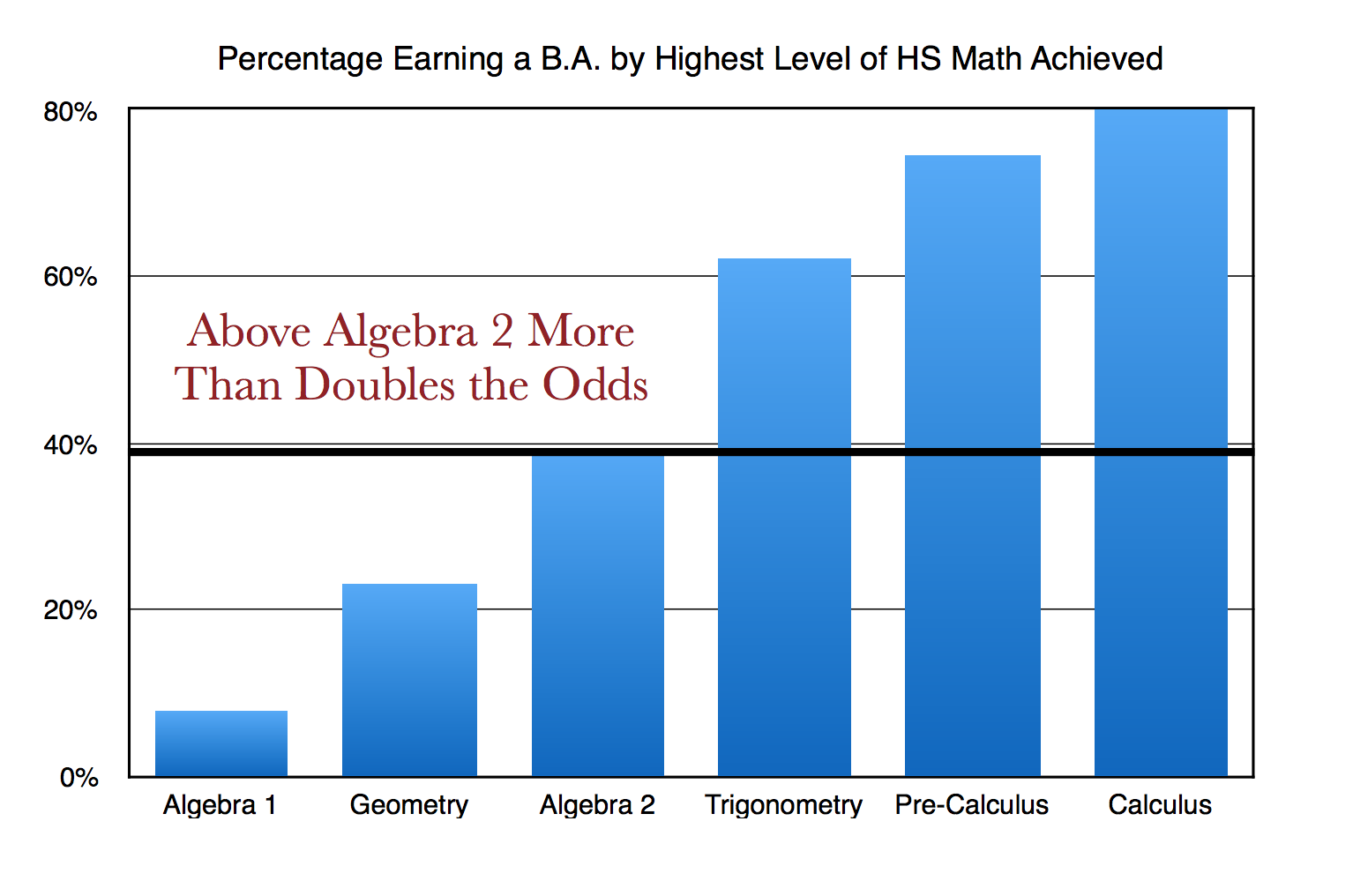Our Goal
We all want to see our kids get a great education that creates opportunities for a better life. For most of us a chance at a better life is through education and a college degree. Our goal is to help increase the number of high school students that go on to college and graduate within 4 years. But how to get there?
Muhammad Chaudhry CEO of the Silicon Valley Education Foundation calls math “the great equalizer” because math offers a level playing field to all students in ways money or socioeconomic status can not. More than any other, math is the best predictor of future college success.
The Problem
The path to college and the attainment of a university degree is filled with challenges, diversions, misinformation, missing information, and a vast array of reasons why so many fall short of a college degree.
College graduation rates are not only vital to our economic prospects as a nation but also as a measure of opportunities for individuals to reach their full potential. The Higher Education Research Institute of UCLA reports that only 27.4% of the U.S. adult population has completed a college degree. The report also states that only 38.9% of students attending college complete a college degree within 4 years. Studies show many of our High School graduates simply are not prepared for the academic challenge of college.
The question is then how do we better prepare our high school students for college success. A study by Clifford Aldeman of the U.S. Department of Education found that, “...of all pre-college curricula, the highest level of mathematics one studies in secondary school has the strongest continuing influence on bachelor's degree completion. Finishing a course beyond the level of Algebra 2 more than doubles the odds that a student who enters postsecondary education will complete a bachelor's degree.” So it turns out High School math achievement is the best predictor of college success.
High school students taking rigorous math courses above Algebra 2 are much more likely to graduate from college.

We can clearly see the importance of attaining a high level of math in High School but what determines a student’s ability to reach these high levels of math in High School?
To ensure our students can reach math courses above Algebra 2 in High School, students must reach Algebra 1 by 7th or 8th grade. An ACT research study, The Forgotten Middle, shows that fewer than 2 in 10 eighth graders are on target to be ready for college by the time they finish High School. This also means that 8 in 10 eighth graders do not have the knowledge or skills to enter High School and succeed. The report goes on to state that students that are behind in math by Middle School find it very difficult to catch up in High School. Therefore it is most important that we focus on K-8 math achievement to ensure students are prepared to enter High School and are ready to take on the higher math challenges needed for college. So all roads to college success are now pointing to Elementary School.
A research study by the American Psychological Association, School Readiness and Later Achievement, again confirms as early as Kindergarten skills in math concepts such as basic numeracy and number sense are the most powerful predictors of future learning. Although to a lesser degree both reading and attention skills do play a factor in predictive future learning, it is math that is consistently associated with higher levels of academic performance in later grades.
The Solution
So if we want our children entering Elementary School to graduate from High School and go on to complete a college degree, the sooner we start their formal math education the more pronounced the effects can be on college graduation rates. These studies show focusing on early math education will move the needle on college graduation rates with the least effort and cost. On the contrary if we wait until Middle School, High School, or even college remediation to try and fix the problem the data clearly shows we are fighting a loosing battle. So research suggests the smart money should be spent on efforts focused on Elementary School math education teaching basic numeracy, number sense, and arithmetic. At RLM we have found no better way to teach these foundational math skills than through the use of the abacus. The Rightlobemath program helps students build the foundational math knowledge the science shows will have a significant impact on later learning.
Now you may be thinking ok, yes, this is a fundamental education problem that requires fixing but my child must be in the top 20%, so I don’t have anything to worry about. But do you have the data to show that your child is in the top 20% and how does your child’s performance compare with his or her peers both nationally and more importantly internationally? Yes state standardized testing aims to provide parents, teachers, and administrators some insight into how our kids compare but this is just one snapshot per year and does not show us nearly enough data to understand how each student’s learning is really progressing. According to the latest PISA international math testing among 15 year olds the U.S. currently ranks 34th out of 65 countries in math. The top 8 performing countries are all Asian. Although U.S. students may be slowly improving nationally in math, internationally we have a long way to go. The PEW Research Center stated that only 29% of Americans rated K-12 STEM (science, technology, engineering, and mathematics) education as above average. We have a systemic math education problem that begins in Elementary School but we know how to fix it. If we want our children to compete for the best opportunities the world has to offer, we must all participate in improving how we manage math education starting in Kindergarten. All our futures are riding on fixing this foundational social issue.